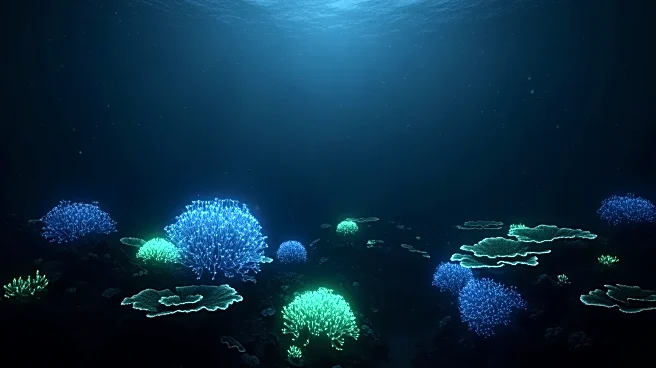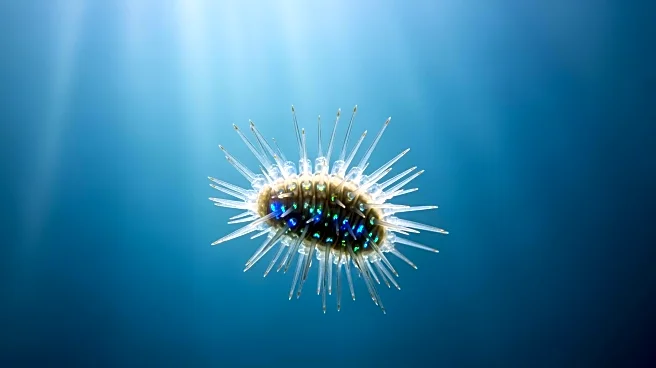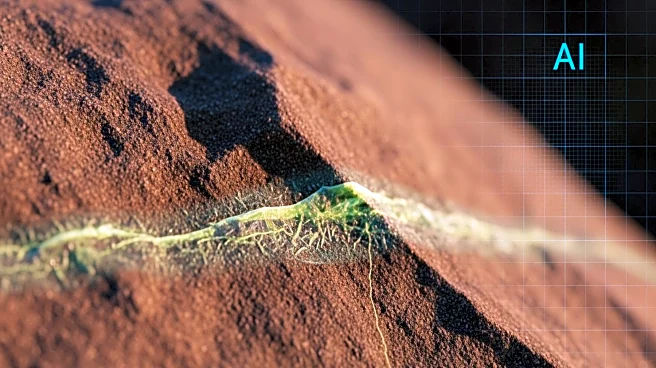What's Happening?
Recent studies have revealed that oxygen production occurs in complete darkness on the seafloor, defying previous human knowledge. Researchers found that oxygen levels increased significantly over time,
indicating a process not previously understood. This discovery was made using the Winkler method, confirming the results were not due to sensor malfunction. The findings suggest that oxygen production in the deep ocean may be more complex than previously thought.
Why It's Important?
The discovery of oxygen production in the deep ocean without sunlight challenges the conventional understanding of oxygen generation, which is typically associated with photosynthesis. This could have significant implications for marine biology and the study of ocean ecosystems, potentially altering theories about the evolution of life on Earth. Understanding this process may also impact future research on deep-sea mining and environmental conservation efforts.
What's Next?
Further research is needed to explore the mechanisms behind this dark oxygen production and its implications for marine ecosystems. Scientists may investigate how this process affects oceanic oxygen cycles and the potential impact on marine life. Additionally, the findings could influence policies regarding deep-sea mining, as oxygen production may be sensitive to disturbances in the seafloor environment.
Beyond the Headlines
The discovery raises questions about the role of non-photosynthetic processes in Earth's oxygen cycle, suggesting that ancient oceans might have had similar mechanisms contributing to atmospheric oxygenation. This could lead to a reevaluation of the timeline and processes involved in the development of complex life on Earth.











